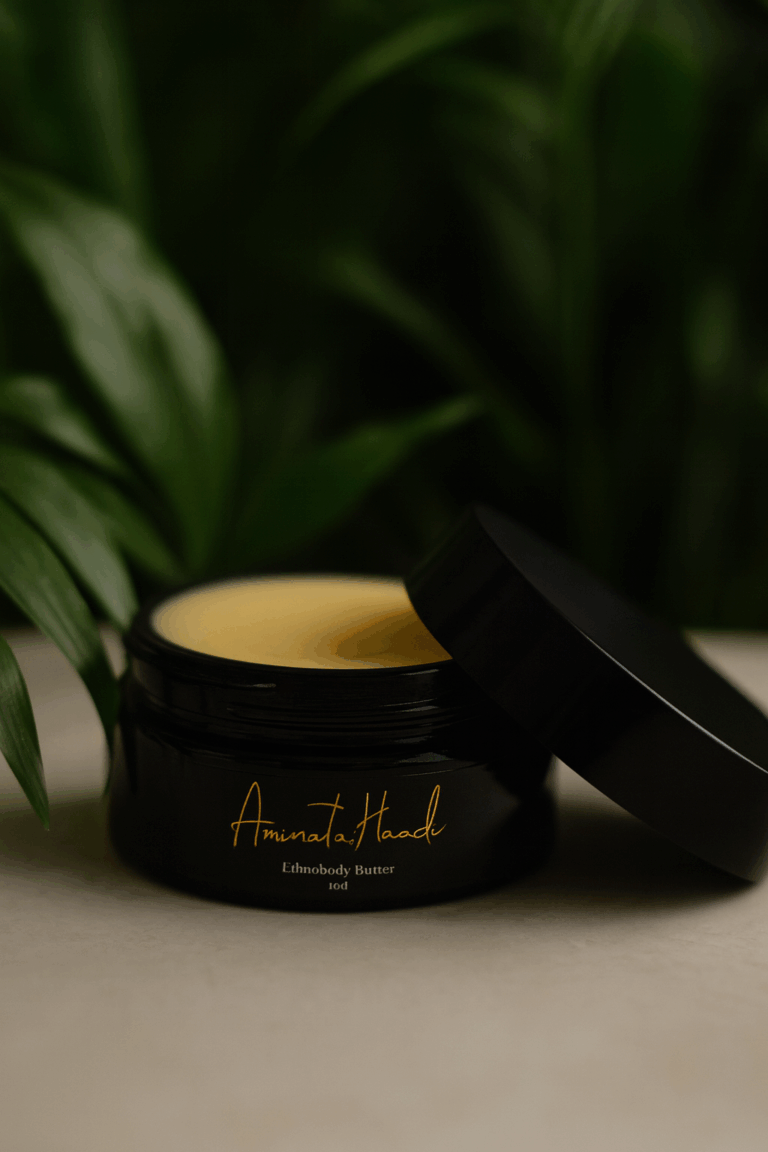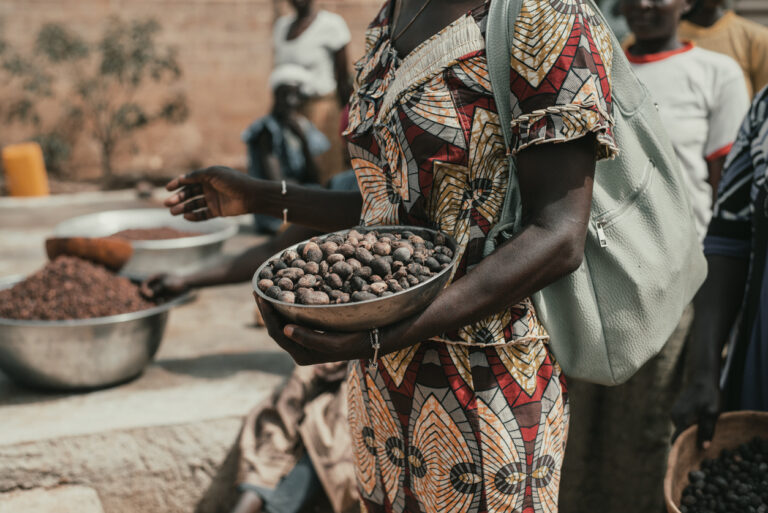A Guide in the Use of Raw Shea Butter for Skin
A Comprehensive Guide in the Use of Raw Shea Butter for Skin
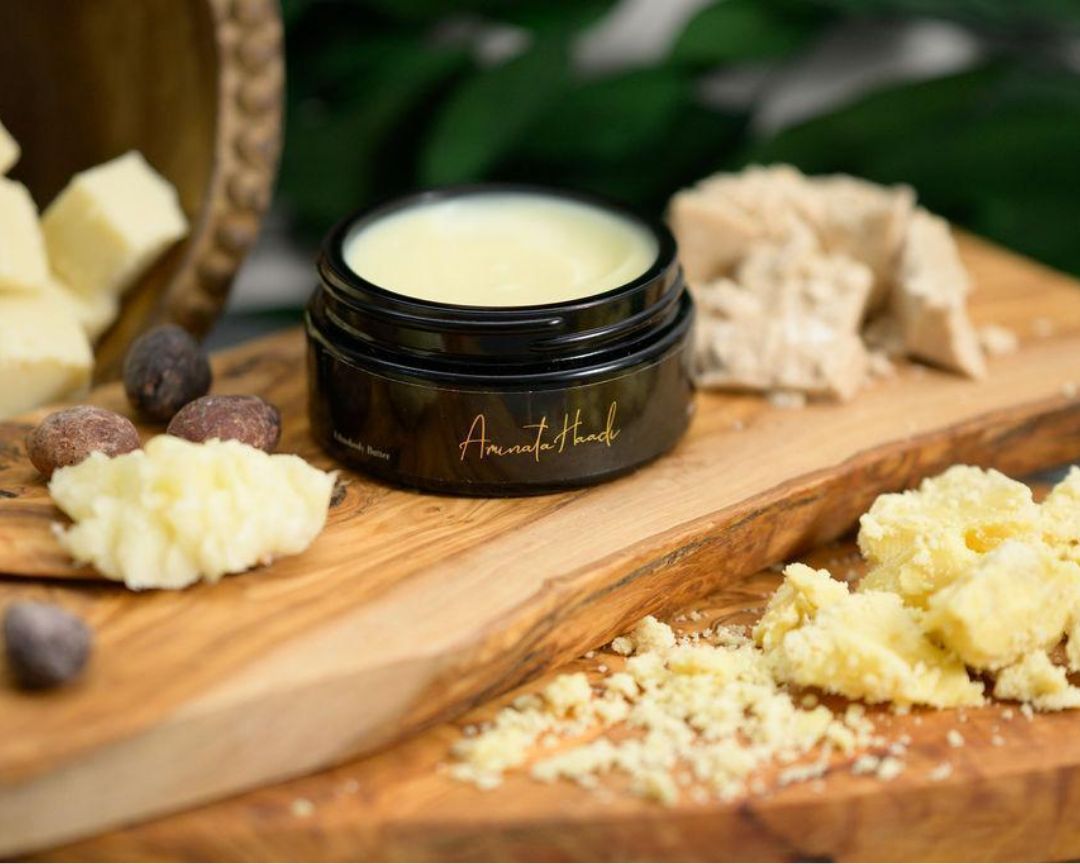
Raw shea butter delivers deep, lasting hydration for all skin types. It’s unprocessed, nutrient-dense, and derived from the nuts of the shea tree.
In this guide, you’ll learn everything you need to know about African shea butter.
We’ll also address common questions – does shea butter clog pores? Can it help with stretch marks? Does shea butter expire or go bad? – and compare shea with other natural butters like cocoa and mango.
By the end of this guide, you’ll understand why shea butter for skin is so beloved. When you’re ready to experience the benefits, Explore Our Collection of organic, unrefined shea butter products and face balms!
Where Does Shea Butter Come From?
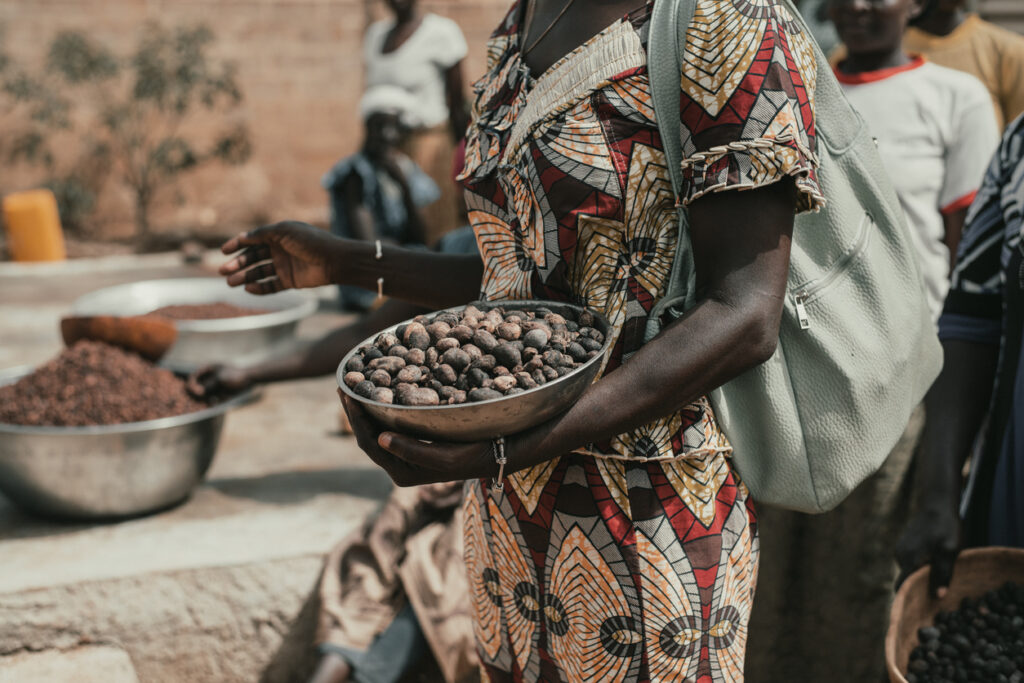
Shea butter is derived from the nuts of the shea tree (Vitellaria paradoxa). These trees grow wild across the region known as the Shea Belt, which stretches through 21 African countries.
Shea Butter Extraction
The process begins with harvesting the fruit, followed by removing the outer pulp to access the inner nut. These nuts are then boiled or steamed and laid out to sun-dry for several days. Once dry, the shells are cracked open to retrieve the kernels inside, which are then roasted to release their natural oils. This roasting creates shea butter’s earthy, slightly nutty scent.
The roasted kernels are ground into a paste, mixed with water, and kneaded by hand. This agitation causes the fat to separate. The mixture is then gently heated, allowing the oil to rise to the surface. Once skimmed, filtered, and cooled, it solidifies into raw shea butter.
Refined or Raw Shea Butter: What’s the Difference?
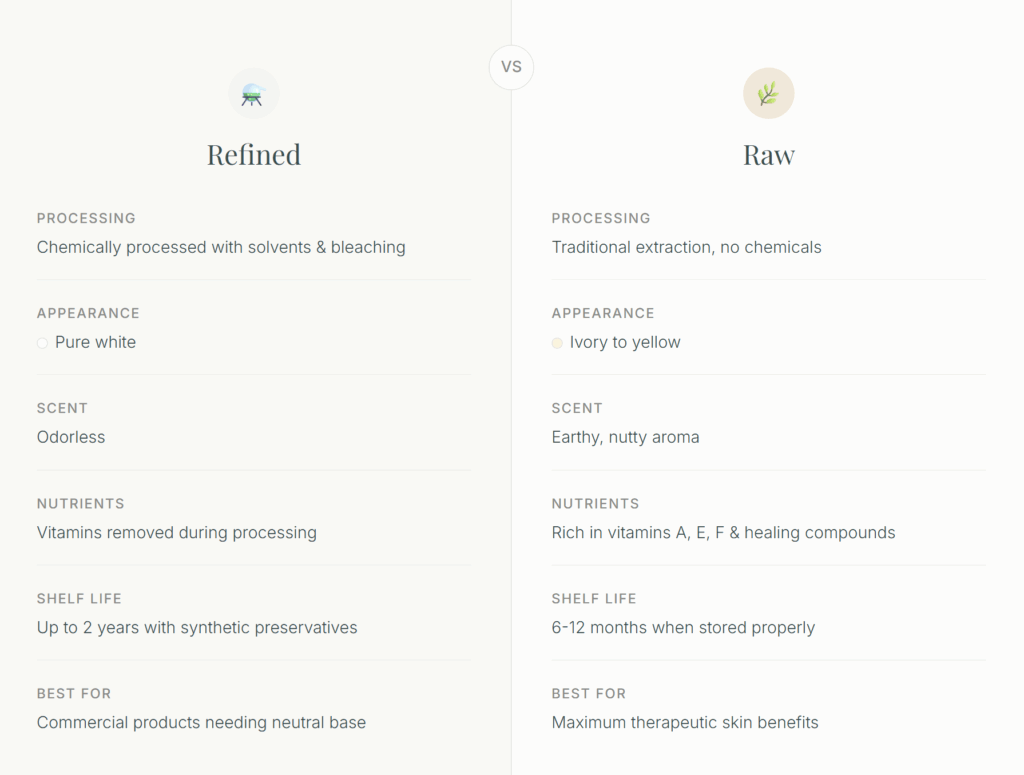
- Raw shea butter: unprocessed (in natural state), nutrient-rich, with its natural scent and color.
- Unrefined shea butter: lightly filtered (through cheesecloth) for debris but not chemically altered or bleached. It may be organic, or it may not—this depends entirely on the farming practices used.
- Refined shea butter: white, odorless, stripped of natural benefits.
- Organic shea butter: certified and free of synthetic chemicals.
Note: Organic status refers to farming practices. Refined vs. unrefined shea butter refers to processing methods.
For the best skincare experience, always choose unrefined, organic shea butter.
Shea Butter for Skin: Benefits and Uses
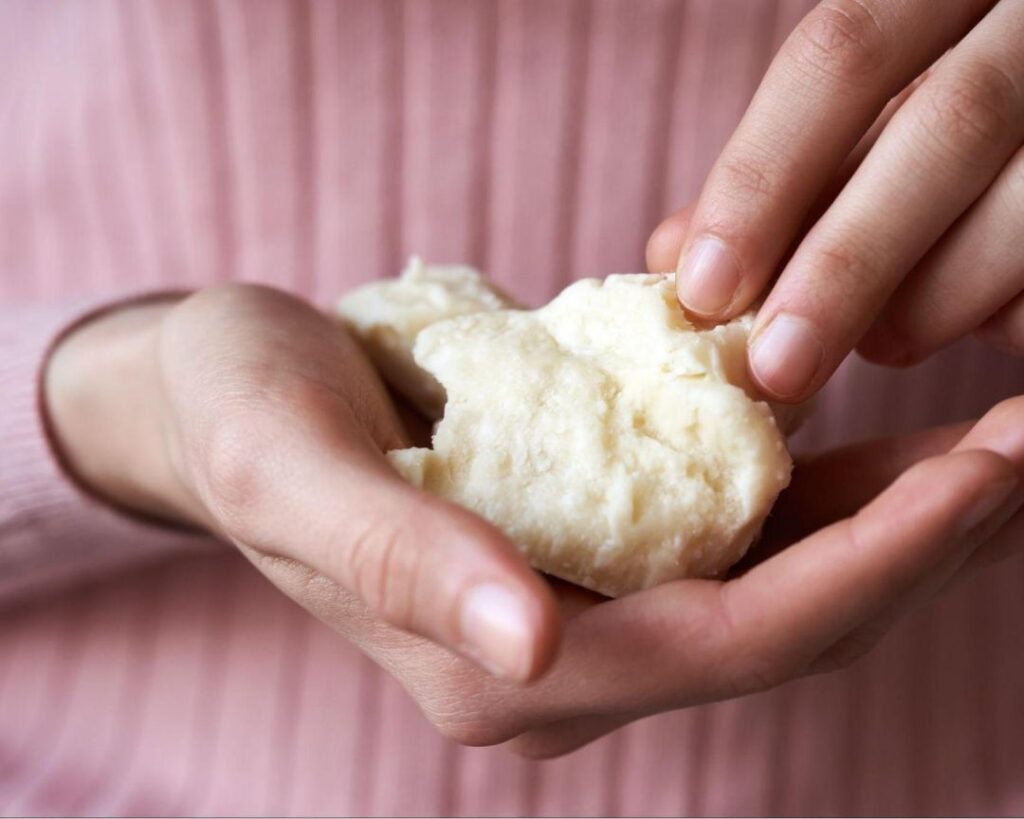
Shea butter offers deep hydration, softens rough patches, calms inflammation, boosts elasticity, and shields skin from environmental damage.
The moisturizing properties come from its fatty acid variation. Stearic acid gives the butter stability while oleic acid influences how hard or soft the butter is. The proportion of these two acids provide shea butter with its overall consistency.
Shea Butter Skin Benefits:
- Vitamin A (Retinoid Precursor)
- supports skin cell turnover and regeneration.
- Helps reduce the appearance of fine lines and scars
- Beneficial for improving tone, texture, and elasticity
- Vitamin E (Tocopherol)
- A powerful antioxidant that protects the skin from free radical damage
- Helps soothe inflammation and promotes healing
- Aids in moisture retention and barrier repair
- Vitamin F (Essential Fatty Acids: Linoleic and Linolenic acids)
- Though not a “vitamin” in the traditional sense, “Vitamin F” refers to a group of omega-6 fatty acids
- Helps reinforce the skin barrier and retain moisture
- Supports smoother, softer skin and is especially helpful for dry or sensitive skin
Shea butter also contains compounds (cinnamic acid derivatives and triterpenes) that have anti-inflammatory effects. This is good for post inflammatory hyperpigmentation as it can reduce swelling, soothe discomfort, and speed up recovery.
How to Use Raw Shea Butter on Skin
Raw shea butter works best when applied correctly. Here’s how to use it for maximum benefit.
Application Steps:
- Start with clean skin. Wash and pat dry, leaving skin slightly damp—not dripping, but not fully dry either.
- Warm a small amount. Scoop a dime-sized portion (for face) or quarter-sized portion (for body) and rub between your palms. Shea butter melts at skin temperature, so friction helps it become spreadable.
- Apply in upward motions. Press gently into skin rather than rubbing aggressively. Focus on dry areas—elbows, knees, heels—or wherever you need the most moisture.
- Allow absorption time. Shea butter is rich. Give it 2-3 minutes to sink in before dressing. If it feels too heavy, you’ve used too much.
How Often Should You Use Shea Butter?
For body care, daily use is fine—especially in dry climates or winter months. For facial use, frequency depends on skin type:
- Dry or mature skin: Once or twice daily
- Normal or combination skin: Once daily, preferably at night
- Oily or acne-prone skin: 2-3 times per week, spot-treat dry patches only
Can You Layer Shea Butter with Other Products?
Yes, but order matters. Apply water-based products first (serums, hyaluronic acid, lightweight moisturizers), then seal with shea butter. The butter creates a barrier, locking in everything underneath.
If you’re using active ingredients like retinol or vitamin C, apply those first and wait 5-10 minutes before adding shea butter. This prevents interference with absorption.
Shea butter pairs well with botanical oils like jojoba, rosehip, or argan. For a lighter option, try our face balms, which combine East African Nilotica shea with complementary oils for balanced hydration.
Is Shea Butter Good for Your Face?

The answer can depend on your skin type. Shea butter for your face provides concentrated fatty acids that reinforce the skin barrier, especially for dry or normal skin types. Those with oily or acne-prone skin may be somewhat adverse given the heavier consistency of shea butter.
Our face balms use East African Nilotica shea butter — a variety naturally higher in oleic acid.
We craft our face balms using East African Nilotica shea butter. This variety is naturally higher in oleic acid, making it more absorbent and lighter in texture—better suited for facial application. This makes it great for daily face care, even for those with sensitive or combination skin.
Does Shea Butter Clog Pores or Cause Acne?
The comedogenic rating of West African shea butter has a rating of 0-2. This means that it’s unlikely to clog pores for most people.
East African shea butter also has a rating of 0-2. However, it has a higher oleic acid content, making it softer, more absorbent, and lighter in texture. This makes it less likely to clog pores. Better for facial skincare and for sensitive or combination skin types.
See: Does Shea Butter Clog Pores and get the best recommendations for shea butter face balms and body butters.
Shea Butter for Stretch Marks?

Shea butter won’t erase stretch marks, but it can improve their appearance over time. Here’s what it does—and what it doesn’t.
Why Shea Butter Helps with Stretch Marks
Stretch marks form when skin stretches faster than collagen production can keep up. The dermal layer tears, leaving visible lines. Shea butter supports skin elasticity and repair through:
- Vitamin E and triterpenes: Promote collagen synthesis and reduce inflammation in healing skin
- Essential fatty acids (linoleic and linolenic): Strengthen the skin barrier and improve moisture retention, which keeps skin supple
- Vitamin A (retinoid precursor): Encourages cell turnover, which can gradually fade hyperpigmentation in newer stretch marks
Prevention vs. Treatment
Shea butter works better as prevention than correction. If you’re pregnant or experiencing rapid weight changes, consistent application can keep skin flexible and reduce the likelihood of new stretch marks forming.
For existing stretch marks, shea butter may soften texture and lighten color—especially if the marks are still red or purple (indicating they’re relatively new). Older, silvery-white stretch marks are harder to improve because the collagen structure has already settled.
How to Use Shea Butter for Stretch Marks
Apply twice daily to areas prone to stretching: abdomen, hips, thighs, breasts, or upper arms. Massage in circular motions for 2-3 minutes. The physical stimulation improves circulation, which aids tissue repair.
Be consistent. Skin cell turnover takes 6-8 weeks minimum. If you’re going to try shea butter for stretch marks, commit to at least 12 weeks before assessing results.
For a deeper look at how shea butter compares to dedicated stretch mark treatments,
See: Is Shea Butter A Stretch Mark Cream Alternative
Is Shea Butter Good for Eczema or Irritated Skin?
Shea butter for eczema? The National Eczema Association doesn’t specifically highlight shea butter as a standalone treatment. However, it’s a core ingredient in many of the products they recommend for eczema-prone skin.
How to Store Shea Butter (and How Long It Lasts)

Raw shea butter can last up to two years if stored correctly. Here’s how to keep it fresh.
Proper Storage Conditions
Store in a cool, dry place away from direct sunlight. Heat and light accelerate oxidation, which breaks down the beneficial fatty acids and vitamins.
If you live in a hot climate or your home temperature exceeds 75°F regularly, refrigeration can extend shelf life—though this will make the butter harder to scoop. Let it sit at room temperature for 10-15 minutes before use.
Keep the container sealed when not in use. Exposure to air introduces moisture and bacteria, which can degrade quality.
Signs Shea Butter Has Gone Bad
- Scent changes: Fresh shea has a mild, nutty aroma. If it smells rancid, sour, or musty, discard it.
- Texture becomes grainy: Some graininess is normal if shea melts and re-solidifies unevenly (this doesn’t affect performance). But if the texture turns slimy or sticky, it’s oxidized.
- Color shifts dramatically: Slight variation in color between batches is normal, but if your shea develops dark spots or turns noticeably yellow, it’s past its prime.
Does Adding Oils or Butters Affect Shelf Life?
Yes. If you’re making your own blends at home, the shortest shelf life ingredient determines the whole mixture’s lifespan. For example, if you mix shea butter (2-year shelf life) with rosehip oil (6-month shelf life), use the blend within 6 months.
Our body butters are formulated with vitamin E (tocopherol) as a natural preservative, which extends stability without synthetic additives.
Shea Butter vs. Cocoa Butter
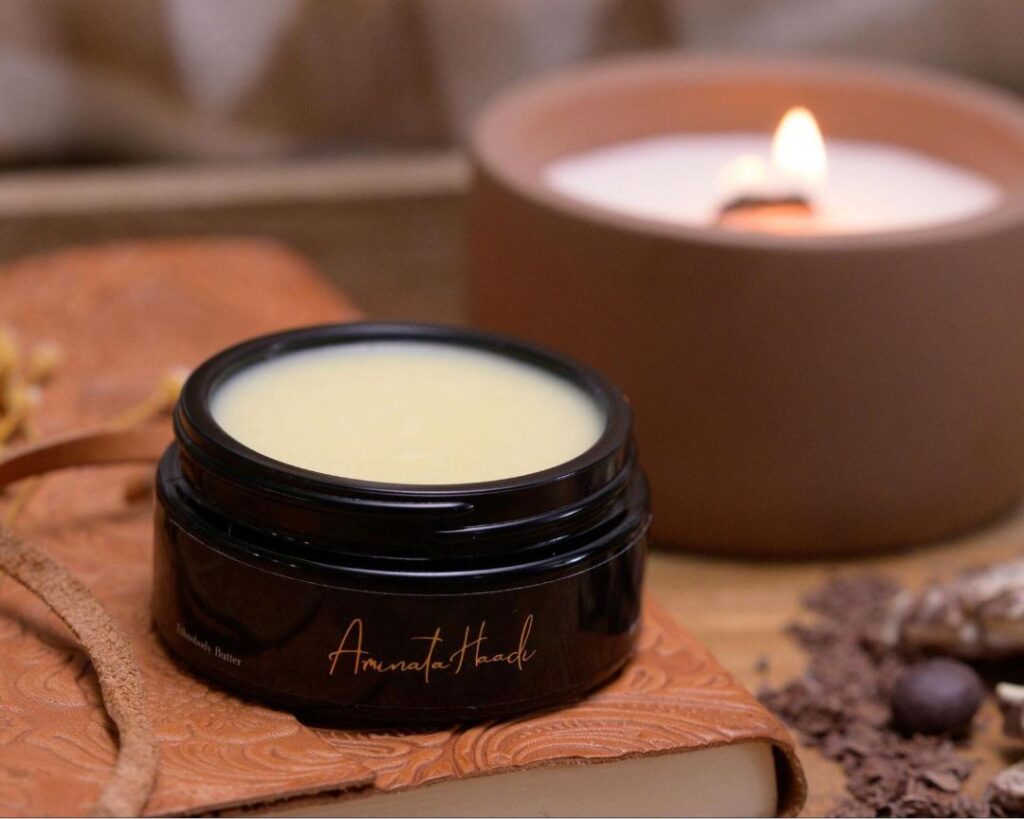
Shea Butter vs. Cocoa Butter is quite simple. Shea butter is much softer and more versatile, cocoa is significantly firmer. It’s one of the hardest butters and has an unmistakable chocolate-scent in its raw form.
We use shea butter as a primary ingredient in all our body butters. To enhance texture and skin benefits, we also use cocoa butter, mango butter, kpangnan butter, and kokum butter.
One product in our collection blends cocoa butter with Madagascar vanilla and kpangnan butter. The result: vanilla forward with a smoky dark chocolate undertone. Refined, not confection.
Shea Butter vs. Mango Butter

Both are natural, plant-based moisturizers—but they have different textures and best use cases.
Texture and Consistency
Shea butter is soft and spreadable at room temperature, though it firms up in cooler environments. It has a slightly nutty, earthy scent in its raw form.
Mango butter is even softer and melts faster on contact with skin. It’s nearly odorless, making it ideal if you prefer fragrance-free skincare or plan to add your own essential oils.
Fatty Acid Composition
Shea butter is higher in stearic and oleic acids, which give it occlusive properties—meaning it forms a protective layer on the skin’s surface. This makes it excellent for sealing in moisture and shielding against environmental stress.
Mango butter has more oleic acid and less stearic acid, so it absorbs slightly faster. It still provides deep hydration but feels lighter and less occlusive.
Best Uses
Choose shea butter if:
- You need intensive moisture for very dry or cracked skin
- You want a butter that works well in colder climates (it holds its structure better)
- You’re targeting skin barrier repair or inflammation (shea’s cinnamic acid content gives it anti-inflammatory properties)
Choose mango butter if:
- You want something lighter for daytime use
- You have combination skin and find shea too heavy
- You prefer a neutral scent
Can You Use Both?
Yes. Many body butters—including ours—blend shea and mango for balanced texture and absorption. Mango adds smoothness and glide, while shea provides lasting moisture and skin protection.
See: Raw Shea Butter vs. Raw Mango Butter
Is Shea Butter Edible?
Only in food-grade form. Cosmetic shea butter is processed and packaged for external use — it’s not regulated for consumption and may contain contaminants unsuitable for ingestion. Food-grade shea butter, used in chocolate production and cooking, undergoes different processing standards.
Shea Butter Products: Oils, Lotions, Balms & Body Butters
- Shea body butter – Traditional body butters are waterless. Rich and restorative, perfect for nighttime. Most commercially sold body butters are water based products and often consist of 50-75% water.
- Shea butter lotion – Water based product. Lightweight, fast-absorbing hydration for daytime. Typically, shea butter consists of less than 10% of the overall product.
- Shea butter oil (Shea nut oil, or shea oil) – Waterless byproduct of the shea butter extraction process.
- Whipped Shea Butter – Shea butter that’s been whipped with air to create a lighter, fluffier texture. The challenge with natural whipped shea butter lies in its stability. As the air pockets gradually dissipate, the product begins to settle unevenly, resulting in a visual appearance that differs from its freshly whipped form. To maintain stability, many additives are introduced to preserve the product.
See: Body Butter vs. Shea Butter Lotion
Experience Shea Body Butter and Face Balms
Our Collection features unrefined, organic shea butter products sourced through fair-trade cooperatives. Each product combines plant butters and botanical oils. No fillers, no synthetic fragrance.
Explore Our Collection and see why unrefined shea butter remains essential to conscious skincare.

